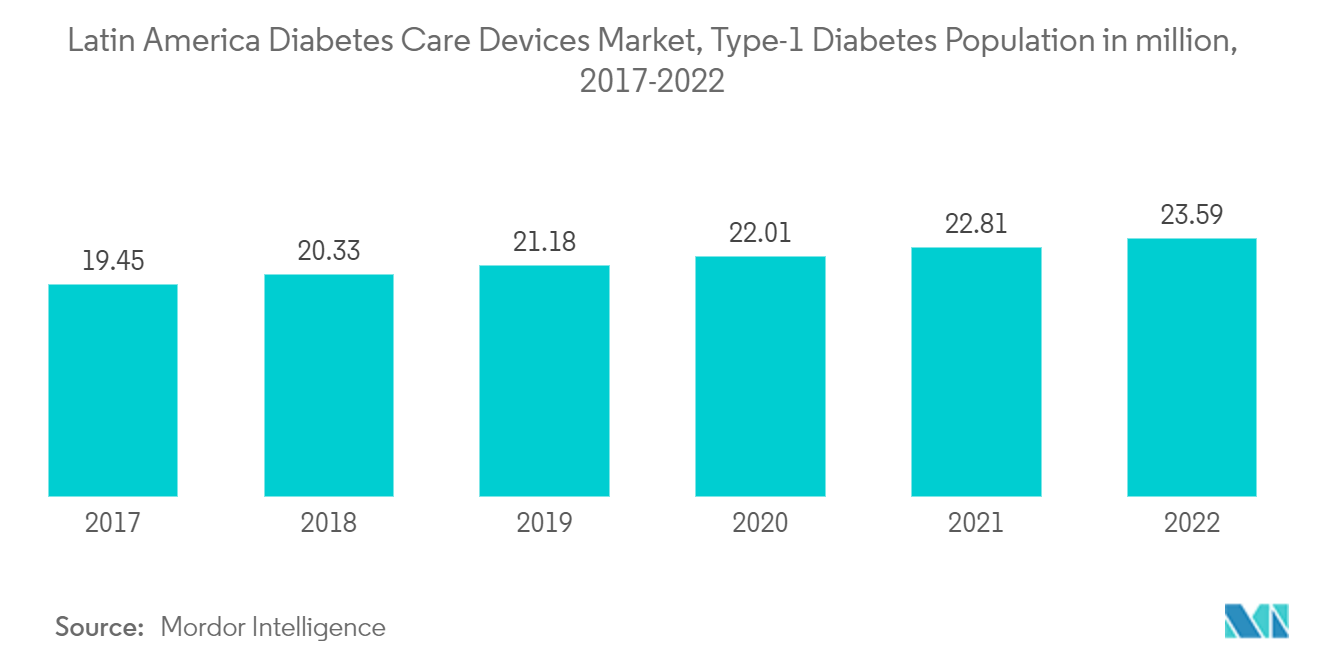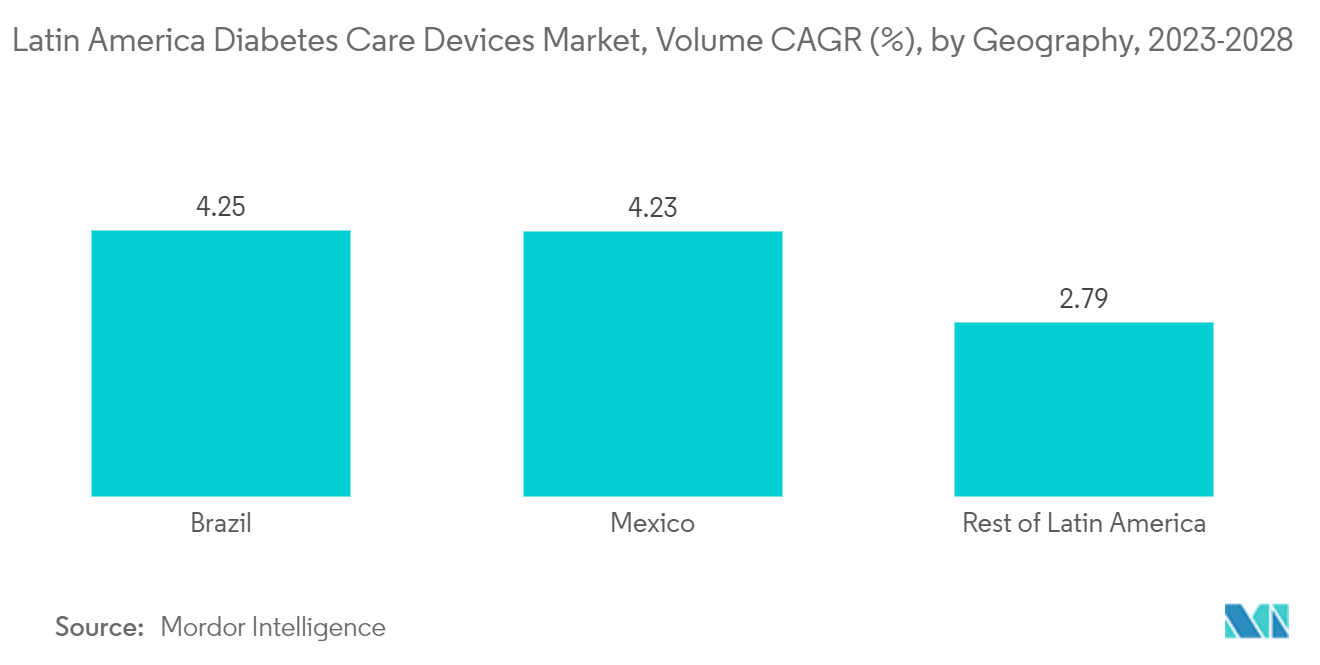Market Trends of Latin America Diabetes Care Devices Industry
The Continuous Glucose Monitoring Segment is expected to witness the highest growth rate over the forecast period
The Continuous Glucose Monitoring Segment is expected to register the highest CAGR of about 12% over the forecast period.
To use a CGM, a small sensor is inserted into the abdomen or arm with a tiny plastic tube known as a cannula penetrating the top layer of skin. An adhesive patch holds the sensor in place, allowing it to take glucose readings day and night. Generally, the sensors are replaced every 7 to 14 days. A small, reusable transmitter connected to the sensor allows the system to send real-time readings wirelessly to a monitor device that displays blood glucose data. Some systems have a dedicated monitor, and some display the information via a smartphone app.
Continuous glucose monitoring sensors use glucose oxidase to detect blood sugar levels. Glucose oxidase converts glucose to hydrogen peroxidase, which reacts with the platinum inside the sensor, producing an electrical signal to be communicated to the transmitter. Sensors are the most important part of continuous glucose monitoring devices. Technological advancements to improve the accuracy of the sensors are expected to drive segment growth during the forecast period.
The frequency of monitoring glucose levels depends on the type of diabetes, which varies from patient to patient. Type-1 diabetic patients must check their blood glucose levels regularly, monitor their blood glucose levels, and adjust the insulin dosing accordingly. The CGM devices show a detailed representation of blood glucose patterns and tendencies compared to a routine check of glucose levels at set intervals. Furthermore, the current continuous glucose monitoring devices can either retrospectively display the trends in blood glucose levels by downloading the data or give a real-time picture of glucose levels through receiver displays.
Most private health insurance plans in Latin America cover medical assistance, procedures, and hospitalization. The region is undergoing a remarkable epidemiological transformation. Diabetes and other chronic, nontransmissible diseases are the leading health problems. Although only 10% of the diabetes population is type-1, the demand for CGM is driven by increased awareness about the benefits of blood glucose monitoring for diabetes patients. Other factors, such as innovative product development by major companies and the rise in the geriatric and obese population, may fuel the market's growth.

Brazil holds the highest market share in the Latin America Diabetes Care Devices Market in the current year
Brazil holds the highest market share in the Latin America Diabetes Care Devices Market this year and is expected to grow at a CAGR of about 5.6% over the forecast period.
According to IDF Diabetes Atlas 2021, among 15.7 million adults, about 10.5% had diabetes in Brazil. The cost of diabetes-related health expenditure in Brazil is the third highest in the world. In addition, 18 million adults have Impaired Glucose Tolerance which places them at high risk of developing type 2 diabetes. Additional data on glycemic control in Brazil show that only 25% met the therapeutic goal of glycated hemoglobin (HbA1c) less than 7% before the pandemic, as recommended by the Brazilian Diabetes Society.
Brazil has implemented a set of reforms to improve the distribution of doctors, develop new forms of the service organization, introduce new financing models, and implement a range of quality improvement initiatives and policy frameworks to overcome risk factors such as obesity. This also highlights opportunities for continuing and expanding innovations in the delivery of diabetes care and the use of diabetes technology. In Brazil, the Brazilian health system is managed by each state and local health secretariat and is governed by the MOH. Furthermore, in many towns where the public sector cannot meet people's requirements, partnerships with private organizations to increase access to public healthcare have been put in place.
According to Universal Health Coverage 2022, four nations, including Argentina, Brazil, Colombia, and Mexico, achieved an overall index of essential coverage of 76-77 percent, with households spending less than 25 percent of their income on health care and expanding access to primary healthcare systems and coverage for noncommunicable illnesses enhanced service coverage, while a rise in the number of qualified healthcare personnel enabled community outreach. In Brazil, the public health system (Sistema Único de Saúde; SUS) has progressively increased the assistance available for individuals with diabetes. The Ministry of Health established a list of medications and supplies the Brazilian Health System (SUS) provided to patients who have diabetes.
Such factors are expected to drive market growth over the forecast period.

